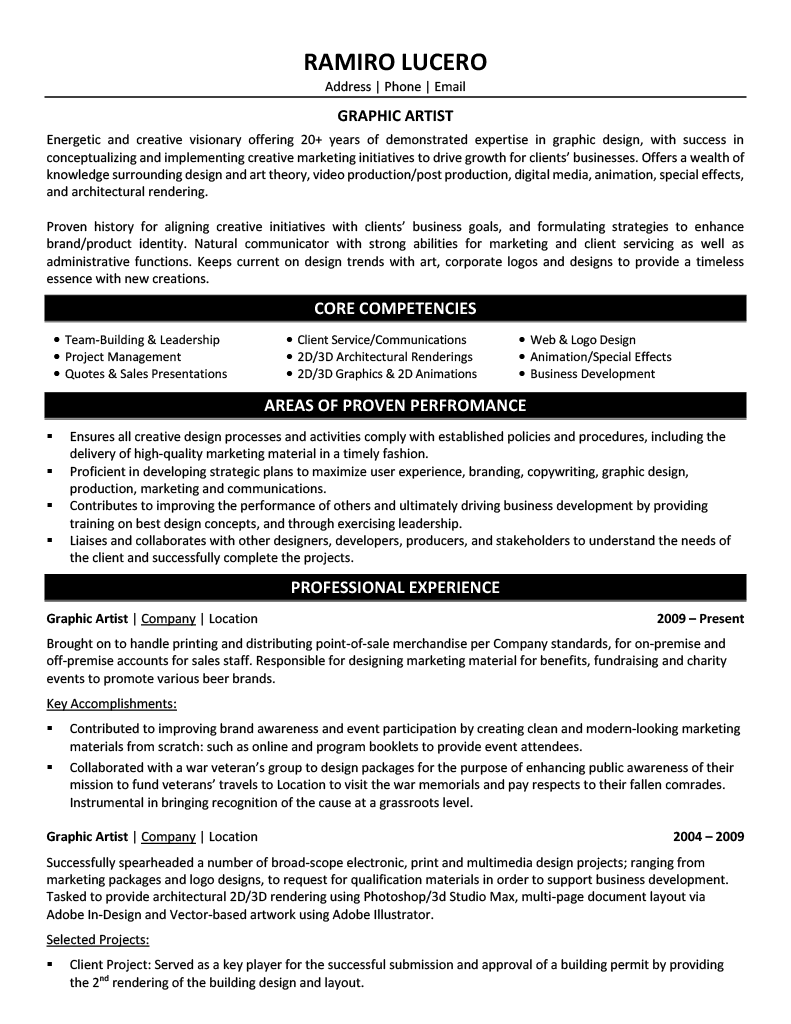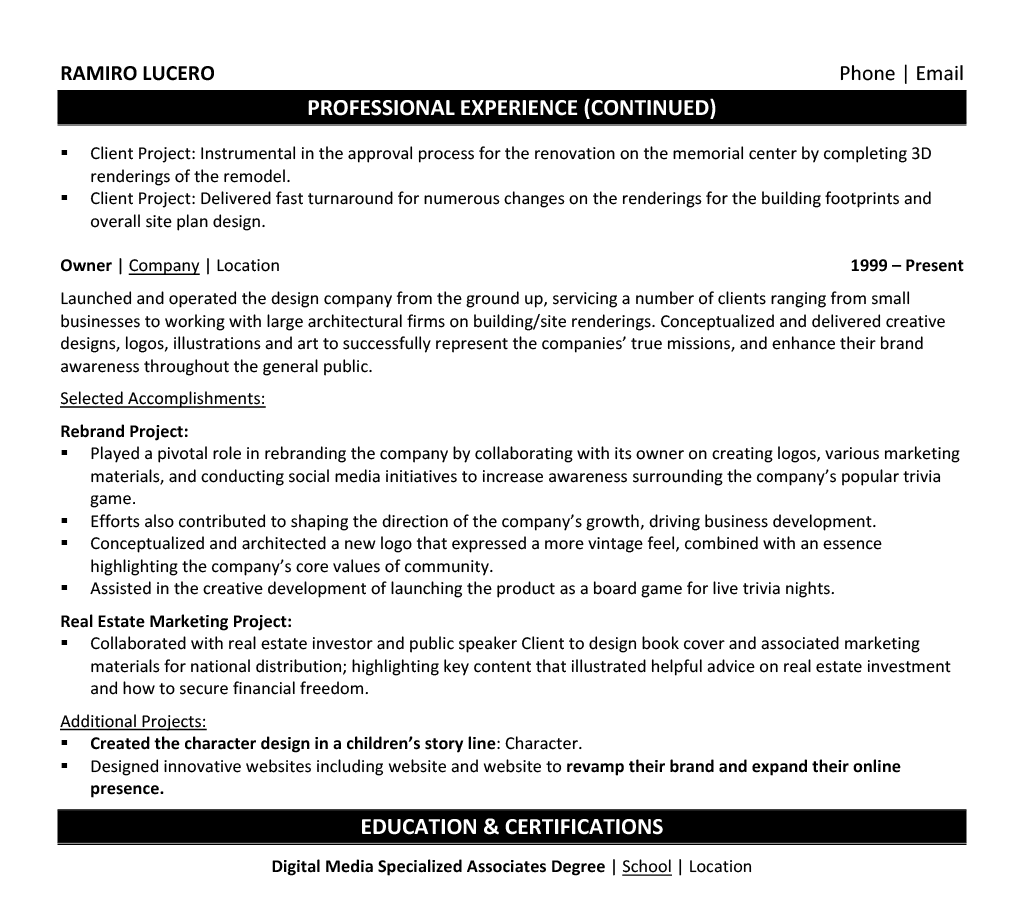

Your portfolio showcases amazing designs, but your resume looks like everyone else's. Many graphic artists struggle to translate their visual creativity into compelling written achievements.
Are you wondering how to make your resume as impressive as your work? You need a document that captures both your artistic talents and your business impact in ways that grab attention and inspire action.
At Resume Target, we help graphic artists turn their creative careers into powerful personal marketing tools. We know how to showcase your design expertise while highlighting the measurable results that make hiring managers take notice.


In today's visually-driven world, graphic artists are the creative forces who transform blank canvases into powerful visual messages that inspire, inform, and captivate consumers through carefully crafted designs.
Whether crafting sleek logos, dynamic website layouts, or eye-catching marketing materials, these visual problem-solvers blend artistic talent with digital expertise, wielding industry-standard software to create designs that perfectly balance aesthetics with strategic communication goals.
If you're ready to turn your creative passion into a professional career, the path to becoming a graphic artist offers exciting opportunities to grow from junior designer to creative director, with each step bringing new challenges and chances to shape the visual landscape of tomorrow.
Let's talk about the exciting earning potential in your graphic arts career! Your creative talents can unlock remarkable compensation opportunities, with specialized design services offering the highest rewards. And guess what? Your earning potential grows significantly as you gain experience and expertise in different industries like advertising, information services, and print media.
Figures from: U.S. Bureau of Labor Statistics
Start your creative journey as a Junior Graphic Designer and climb the ladder to become an Art Director or Creative Director. Your path can include exciting specializations in UI Design or Animation.
Beyond basic design abilities, advancing your career requires mastering advanced technical tools, developing strategic thinking, and honing your leadership capabilities.
- Adobe Creative Suite mastery - UI/UX design principles - Project management - Client communicationBreaking into graphic design starts with mastering industry-standard software like Adobe Creative Suite, building a standout portfolio, and gaining hands-on experience through internships or freelance projects.
To advance in your graphic design career, you'll need to develop strong artistic sensibility and technical skills, including proficiency with design software and the ability to effectively communicate visual concepts.
Requirements from Qianmu.org
From bustling creative hubs to thriving media markets, graphic artists find rich opportunities across major metros.
Figures from U.S. Bureau of Labor Statistics
Struggling to showcase your creative portfolio and technical skills in a traditional resume format that still catches a hiring manager's eye? This comprehensive, section-by-section guide will help you craft a fine arts resume that perfectly balances your artistic achievements with professional experience.
As a creative professional, you might find it challenging to condense your artistic talents and technical expertise into a few compelling lines at the top of your resume.
While you excel at visual storytelling through your designs, translating your creative abilities, software mastery, and client success stories into words can feel like trying to explain a color palette to someone who can't see the canvas.
How would you describe your unique artistic style and creative approach that sets you apart from other graphic artists in your field?
Reason: Opening your summary with your distinctive creative perspective helps establish your personal brand and immediately differentiates you from other candidates. This gives hiring managers insight into your artistic identity and potential cultural fit.
What combination of design software, creative disciplines, and artistic mediums best represents your professional toolkit as a graphic artist?
Reason: Highlighting your technical and creative versatility in the summary provides an immediate snapshot of your capabilities without diving into specific projects. This helps employers quickly assess your overall fit for their needs.
How would you characterize the intersection between your commercial design sensibility and your ability to meet client objectives through visual storytelling?
Reason: This helps frame your artistic abilities in a business context, showing potential employers that you understand the balance between creativity and commercial objectives. It demonstrates professional maturity and business acumen alongside creative talent.
As a graphic artist, you need to showcase both your creative abilities and technical proficiency, from conceptual design skills to mastery of industry-standard software like Adobe Creative Suite.
Your skills section should balance essential design fundamentals like typography and color theory with practical capabilities such as brand development, digital illustration, and file preparation for both print and digital media.
Showcase your creative journey by organizing your experience into three impactful sections: a compelling role overview that sets the scene, quantifiable design achievements that demonstrate your impact, and core responsibilities that highlight your versatile skill set.
Many graphic artists struggle to translate their creative portfolio into concrete business value that resonates with hiring managers. Transform your artistic accomplishments into measurable results by connecting your designs to increased engagement rates, brand recognition scores, and revenue growth metrics.
The responsibilities section demonstrates how you blend creativity with technical expertise to deliver impactful visual solutions. Your duties should showcase both your artistic abilities and your understanding of client needs, while highlighting how your work drives business goals and brand success.
Your formal education and professional certifications demonstrate your commitment to mastering design principles and staying current with industry tools. List your most relevant qualifications first, prioritizing degrees in Visual Arts, Graphic Design, or Digital Media, along with any Adobe certifications or specialized training in UI/UX design.
Now that you've created a strong foundation using Resume Target's comprehensive resume writing guidelines, you're ready to transform your resume into a powerful tool that showcases your creative expertise.
While your portfolio speaks volumes about your artistic abilities, a personalized resume that aligns with specific graphic artist positions is crucial for standing out in this competitive creative field.
By strategically incorporating relevant keywords and highlighting the exact design skills each employer seeks, your customized resume will not only sail through ATS screenings but will also demonstrate to hiring managers that you're the creative professional they've been searching for.
Ready to turn your resume into your competitive edge? Let's make every application count by tailoring your resume to speak directly to each dream creative role!
Don't let a lack of professional experience hold you back from launching your graphic artist career! Your creative portfolio, relevant coursework, and technical skills can speak volumes about your potential.
Even without formal work experience, you can showcase your talent through class projects, personal designs, and any freelance or volunteer work you've completed.
Focus on highlighting your design software proficiency, creative portfolio pieces, and relevant educational achievements to make your resume stand out.
For more detailed guidance on structuring your entry-level resume, check out the Student Resume Writing Guide to help you craft a compelling application.
Your creative portfolio and design education are powerful assets that deserve to shine in your summary section, even without years of professional experience.
Focus on showcasing your technical skills, successful student projects, and your unique artistic perspective that makes you stand out as an emerging talent.
"Creative and detail-oriented Graphic Artist with extensive training and hands-on experience developing visual content across multiple platforms. Proficient in Adobe Creative Suite with a portfolio featuring 25+ successful design projects, including award-winning university magazine layouts and brand identity packages. Completed three design internships with demonstrated ability to meet tight deadlines while maintaining creative excellence. Seeking to leverage strong typography, layout, and digital illustration skills to deliver compelling visual solutions that exceed client expectations."
Now's your chance to transform your creative education into compelling content that catches every hiring manager's eye!
Don't just list your degree - showcase the specialized courses and standout projects that demonstrate your design expertise, like that award-winning brand identity project from your Advanced Typography course.
The common courses for a degree or certification in Graphic Arts include various subjects applicable to design.Relevant Coursework: Digital Illustration | Typography Design | Color Theory | Web Design Principles | Motion Graphics | User Interface Design
Key Projects:
Brand Identity Redesign: Led comprehensive rebranding project for local non-profit organization, developing cohesive visual identity system including logo, color palette, and brand guidelines.
Interactive Digital Magazine: Conceptualized and executed digital publication combining traditional layout principles with interactive elements.
Leverage your creative education, software proficiency, and design experience to craft a skills section that showcases your artistic capabilities and technical knowledge gained through coursework, personal projects, and internships.
As an aspiring Graphic Artist, your combination of technical skills and creative abilities positions you well for a field that continues to grow across digital and traditional media platforms, offering exciting opportunities to build your portfolio and career.
Let's face it - trying to showcase your creative portfolio and innovative design skills on a traditional resume format feels like trying to paint a masterpiece with your hands tied behind your back.
At Resume Target, we specialize in crafting resumes that help creative professionals like you shine in the competitive arts industry, transforming your visual storytelling abilities into compelling career narratives.
Our expert writers have helped countless graphic artists land roles at top creative agencies and in-house design teams by perfectly balancing their artistic achievements with concrete business impact.
Don't let your incredible design talent get lost in translation - with design hiring ramping up for the upcoming quarter, now is the perfect time to partner with Resume Target and create a portfolio-style resume that captures your unique creative voice.
Impress any hiring manager with our arts resume writing service. We work with all career levels and types of arts professionals.
Learn More → Arts Resume Writing Services